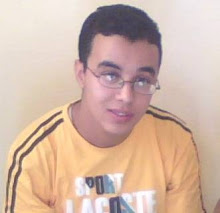The Natural approach
This approach is based on the tenets of several theories, the most prominent one being The Monitor Model developed by Stephen Krasher. The principles of this model are based on several hypotheses which are outlined below:
Learning and Acquisition Hypothesis; The learner has two ways of attaining the second language. Subconscious Acquisition and Conscious Learning. In other words the learner must learn to speak and think in the second language.
The Monitor Hypothesis ;The subconscious knowledge of the second language allows the learner to check and correct language output forming a kind of conscious editing process.
The Natural Order Hypothesis; The acquisition of languages takes place in a predictable order. There are certain "universal procedures of language development." Each person has an "internal natural syllabus of acquisition" which results in comparable errors at comparable moments regardless of which language is being learned. In other words students who have difficulty with the acquisition of German will likely have difficulty with the acquisition of English.
The Input Hypothesis; Language must be learned in a "scaffolded" manner. The input must be comprehensible, meaningful, and just beyond the learners' current understanding and competence. The learners extend their knowledge of language by building on what they already know. A good progression of topics and situations for the second language learner is as follows
topics
situation
1 greeting
1. Names
2. Description of themselves an others
3. Family
4. Numbers
5. Clothing
6. Colors
7. Objects in the classroom
2. Classroom Commands
STRAGEIES USING THE NATURAL APPRAOCH
PRE-SPEECH ACTIVITIES
1. "TEACHER" SAYS: The teacher gives commands and students must act out what she says (eg. stand up, turn around, raise your right hand, etc.). This activity can also be used to teach parts of the body. This activity is an example of a method of language learning called Total Physical Response. Objective: Learn about and practice the skills and strategies of effective listeners.
2. FIND THE PICTURE: Cut pictures of various items from magazines. These pictures may or may not be of vocabulary words that the students are familiar with. Pass out one picture to each student. The activity then, is to have each student say the name of the student and what picture they have (eg. Tom has a picture of a boat). Each student takes a turn. A variation on this activity is to have the students ask questions instead of using statements (eg. Who has the picture of the boat?). This activity can also be made into a Total Physical Response Activity where the teacher might say, "John find the picture of the boat and give it to Sally."
Objective: Participate in a variety of shared language experiences.
3. SHOE BOX ENGLISH: Over a period of time collect interesting items in a shoe box. Then as a language teaching activity the teacher can pull items from the box and use simple words to name and describe the items. As time progresses students will be able to assist in the naming then eventually the describing of these items. Another use for this activity is to collect items that begin with each letter and keep them in separate shoe boxes. This leads to a letter and letter sound activity done much the same as the above mentioned but focusing on phonemic awareness.
Objective: Use visual cues to locate information and ideas and to construct and confirm meaning.
EARLY LANGUAGE PRODUCTION
1. PICTURE STUDY: Find a fairly complicated picture with lots of activity. Then begin to question the students using questions that would elicit yes/no or one or two word responses. For example if you show a picture of a classroom, you could ask: Is there a woman in this picture? Is the woman young or old? What is the boy at the chalkboard wearing? What color is the woman's dress? etc.
Objective: Interpret illustrations, photographs, diagrams, maps, graphs, and other visual texts.
2. NAME ACTIVITIES: Have the students use the sheet provided to learn and reinforce the learning of their first, middle, and last names. As an extension use the made up luggage tags provided to have the students interview each other in order to fill out the information. (It is also possible to obtain real luggage tags from a travel agency.) You can also use names to play games such as "If your last name is ____________ then stand up."
Objective: Select from a range of word choices and use simple sentence patterns to communicate ideas and information.
EXTENDING LANGUAGE PRODUCTION
1. OPEN-ENDED SENTENCES: In this activity the students are encouraged to create open-ended sentences. Using the sheet provided have the students fill in the blanks then share answers. The students are asked to use one word to fill in the blank but some may quickly progress to short phrases.
Objective: Reread to ensure ideas make sense and add more information if necessary.
2. OPEN-DIALOG: The development of open-dialog is also useful for early production. Photocopy the provided sheet onto an overhead sheet or write the phrases on the board. Then the short dialogs are practiced in small groups depending on the size of the group. Also useful would be The Shoe Box English Activity (above) where you could extend the amount of conversation about each item chosen.
Objective: Experiment with the rhythms and sounds of language.
jeudi 18 décembre 2008
Inscription à :
Publier les commentaires (Atom)


Aucun commentaire:
Enregistrer un commentaire